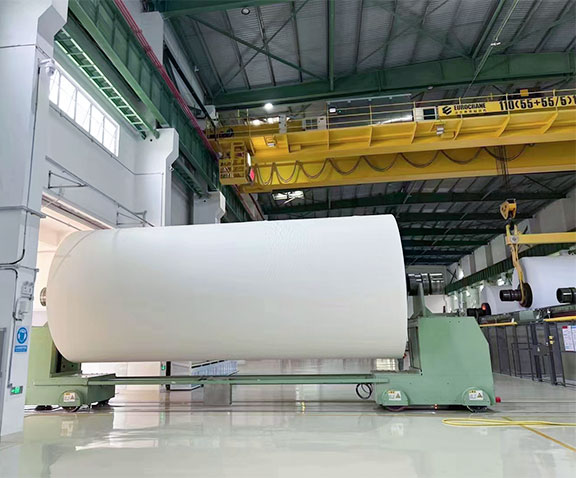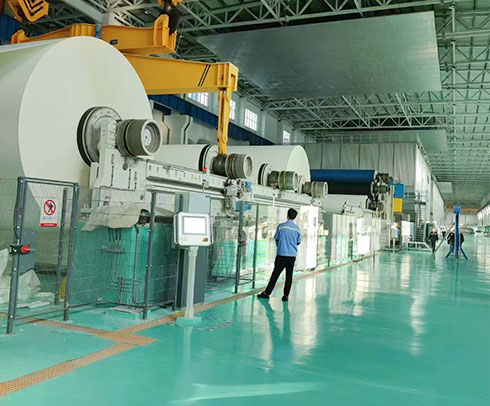CB (Coated Back): This is the bottom layer of NCR paper. The front of the CB sheet is coated with a layer of microcapsules containing colorless dye precursors. When pressure is applied to the front of the CB sheet, these microcapsules will rupture and release colorless dye precursors.
CFB (front and back coating): The CFB board is placed directly on top of the CB board. It is coated with microcapsules containing chromogenic agents on both the front and back. When pressure is applied, the chromogenic agent reacts with the dye precursor in the CB sheet, resulting in a chemical reaction that produces the desired color on the CFB sheet.
CF (front coating): The CF sheet is placed on top of the CFB sheet. Its front is coated with microcapsules containing chromogenic agents. When pressure is applied to the front of the CF sheet, the microcapsule releases a color developer, which reacts with the colorless dye precursor in the CFB sheet to produce a color copy on the CF sheet.
Optional additional layers: Some NCR paper sets may contain more layers to create additional copies. For example, the four part NCR kit may include additional CFB2 (front and back coating 2) sheets and CF2 (front coating 2) sheets. These additional layers are used to generate more copies beyond the initial three layers.
CB (back coating): CB sheets contain colorless dye precursors. When pressure is applied, such as by writing or printing on the top sheet, the microcapsules on the front of the CB sheet rupture, releasing the dye precursor onto the next layer.
CFB (front and back coating): The CFB board is sandwiched between the CB and CF boards. It reacts with the dye precursor released from the CB sheet, creates a colored copy on its front, and transfers the reaction to the CF sheet above.
CF (front coating): The CF sheet reacts with the dye precursor in the CFB sheet and produces a colored copy on its front. This is the top-level copy of the NCR set, which can be easily read.
The other layers follow a similar process, with each layer serving as a replica for subsequent use. The more layers of
Carbonless Copy Paper, the more copies can be generated. These layered papers are typically used to create two or three copies of handwritten or printed documents, such as tables, invoices, receipts, etc., without the need for carbon paper.
What application areas can the advantages of NCR paper be reflected in?
The advantages of
NCR paper can be reflected in various application areas that require the creation of handwritten or printed copies or three copies of documents. NCR paper provides a clean, convenient, and efficient way to generate multiple copies without the need for traditional carbon paper. The following are some application areas where the advantages of NCR paper are particularly beneficial:
Business and office documents:
Invoices and Receipts:
Carbonless Copy Paper is widely used to generate copies of invoices and receipts for customer records and accounting purposes.
Purchase Order: Enterprises use NCR paper purchase orders to create copies of suppliers and their own records.
Delivery Receipt: Transportation and logistics companies use NCR paper as the delivery receipt and provide copies to the driver and recipient.
Work orders: Service companies, repair shops, and maintenance services use NCR paper as work orders to maintain records of the services provided.
Retail and Sales:
Sales Receipt: Retail stores and enterprises issue NCR paper receipts to customers, providing a copy as a record, while retaining a copy for the enterprise.
Point of Sale (POS): NCR paper is used to generate two or three copies of sales transactions at the cash register.
Healthcare and medical records:
Medical forms: Medical institutions use NCR paper to create duplicate patient charts, prescription forms, and medical records.
Prescription book: Doctors use NCR prescription books to provide copies of prescriptions to patients and pharmacies.
Education and institutions:
Attendance and Sign-in Forms: Educational institutions and organizations use NCR paper to create duplicate attendance records for meetings and activities.
Permit Form: NCR paper is used to generate three copies of the on-site inspection and activity permit form.
Law and Contract:
Legal documents: Law firms and legal professionals use NCR paper to create multiple copies of legal contracts, agreements, and court documents.
Real estate transactions: Real estate agents and agents use NCR paper to create real estate transaction documents and contracts.
Logistics and transportation:
Transportation and Order Forms: Logistics and e-commerce companies use NCR paper to generate copies of transportation orders, packing lists, and order confirmations.
Manufacturing and Production:
Quality Control Form: Manufacturing and production facilities use
Carbonless Paper as a quality control list and inspection report.
Production orders: NCR paper is used to create duplicate production orders and work orders.
Reception and Restaurant:
Guest Cheques: The restaurant uses NCR paper guest checks to provide detailed bills to customers and keeps a copy as a record.
On site services and trade:
Service Reports: On site service technicians and merchants use NCR paper to create duplicate service reports and work completion forms.
Inspection Report: Inspectors and contractors use NCR paper to generate duplicate inspection and compliance reports.
Event Management:
Tickets and admission tickets: NCR paper is used to create duplicate event tickets and admission forms for entering venues and events.
Compared to carbon paper, NCR paper has the advantages of easy replication, convenience, and reduced confusion, making it a






